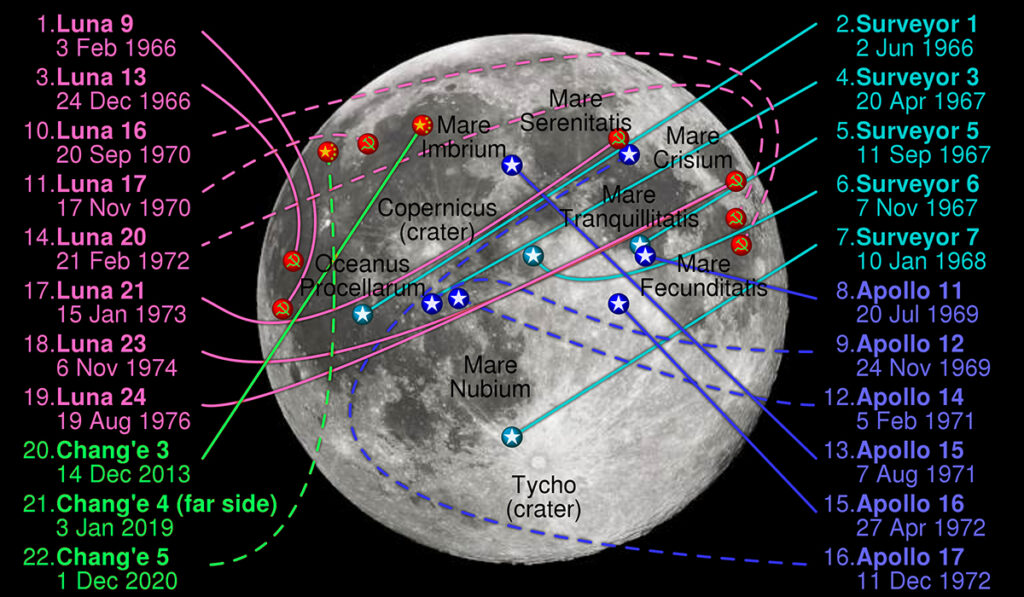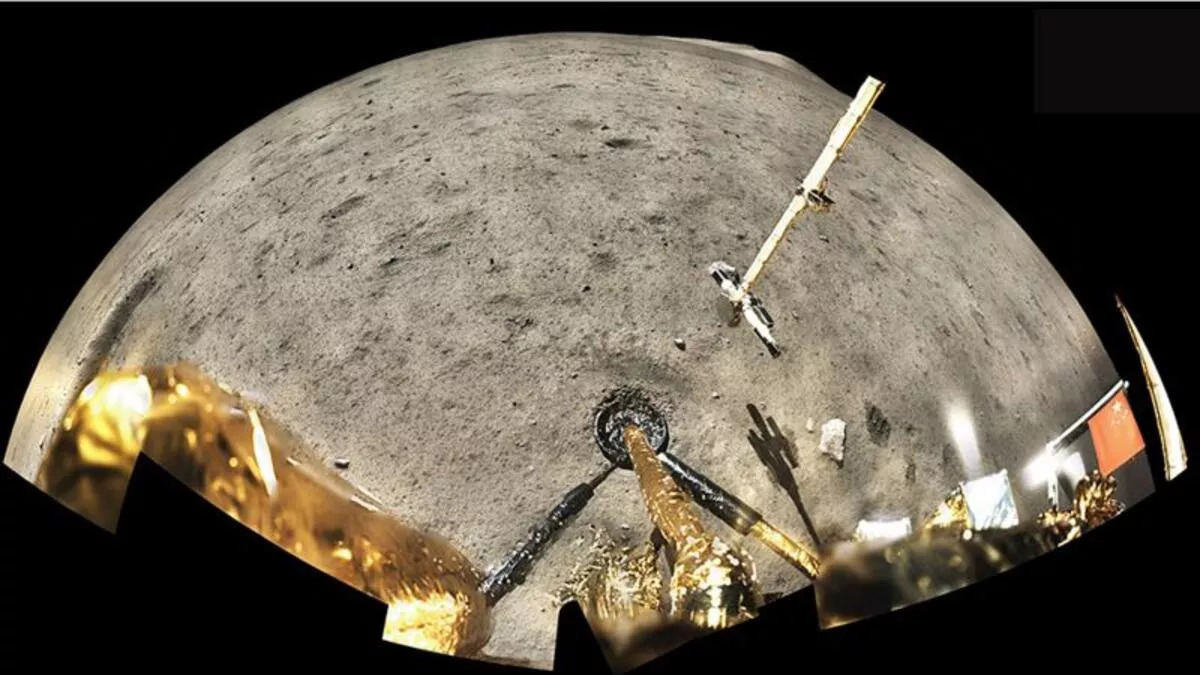A recent mission to the Moon detected water in lunar soil, the first in situ measurement of its kind. The Chang’e-5 lander, part of a lunar sample return mission by the China National Space Administration, measured the total water concentration in the regolith and rocks surrounding its landing site in the northern Oceanus Procellarum basin. The measurements will help the team better contextualize the 1.7 kilograms (just under 4 pounds) of lunar material Chang’e-5 returned to Earth in December 2020.
Water from the Sun
Chang’e-5 launched on 23 November 2020 and sent a lander to collect samples from a basin filled with mare basalt that is roughly 2 million years old. (That’s the youngest known lunar basalt.) The lander spent 2 days collecting samples that were returned to Earth while also gathering visual, spectroscopic, and radar data of the landing site.
The Chang’e-5 lander spectroscopically measured the total water concentration of the soil—that is, the combined amount of hydroxyl (OH) and water (H2O). The researchers found that the regolith around the lander contained 120 parts per million (ppm) of water. According to the researchers, the solar wind is largely responsible for creating that water. The exact process by which this happens is still unclear, explained lead researcher Honglei Lin, but is suspected to happen via two pathways.
“First, the solar wind implants hydrogen atoms into upper 200 nanometers of lunar regolith grains and [if] the hydrogen atoms then bind with oxygen, hydroxyl can be formed,” he said. “Second, the hydrogen atoms reduce iron oxides in the lunar regolith to form H2O with energy provided by micrometeorite bombardment.” Lin is a geophysicist at the Chinese Academy of Sciences in Beijing.
The total water in Chang’e-5’s regolith roughly matches what has been measured in the lunar regolith collected by the Apollo missions. However, when the lander also measured the water concentration in a roughly 20- × 15-centimeter rock near its landing site, it found a higher water concentration, 180 ppm. That might mean that the rock, named CE5-Rock, contains not only water that was implanted by the solar wind but also water that originated on the Moon. This research was published in Science Advances on 7 January.
Completing Our Picture of the Moon
Water on the Moon has previously been detected remotely, in returned samples, and in collision ejecta. The Chang’e-5 lander’s spectroscopic measurement of water at the landing site confirms these detections and, when coupled with the more advanced analyses the returned samples will undergo, could provide a more complete understanding of how this particular location on the Moon evolved.

Lin said that should a future mission revisit the site, a broader wavelength range for the spectroscopic measurements would help determine how much of the total water is H2O and how much is OH. “Knowing the exact forms of water in the lunar regolith is helpful for understanding the solar wind implantation process,” he said. Moreover, “measurements of hydrogen isotope compositions would be helpful to determine the fractions of water from solar wind implantation and lunar origin in CE5-Rock.”
“I think this work provides more confident evidence on the existence of water on the Moon based on the studies of the lunar regolith acquired by the Chang’e-5 lander,” said Weihua Wang, a physicist at the Chinese Academy of Sciences who has studied the lunar samples returned by Chang’e-5 but was not involved with this research. “The work would provide more information on the lunar interior, formation, and evolution and could stimulate more work on this topic.”
—Kimberly M. S. Cartier (@AstroKimCartier), Staff Writer

